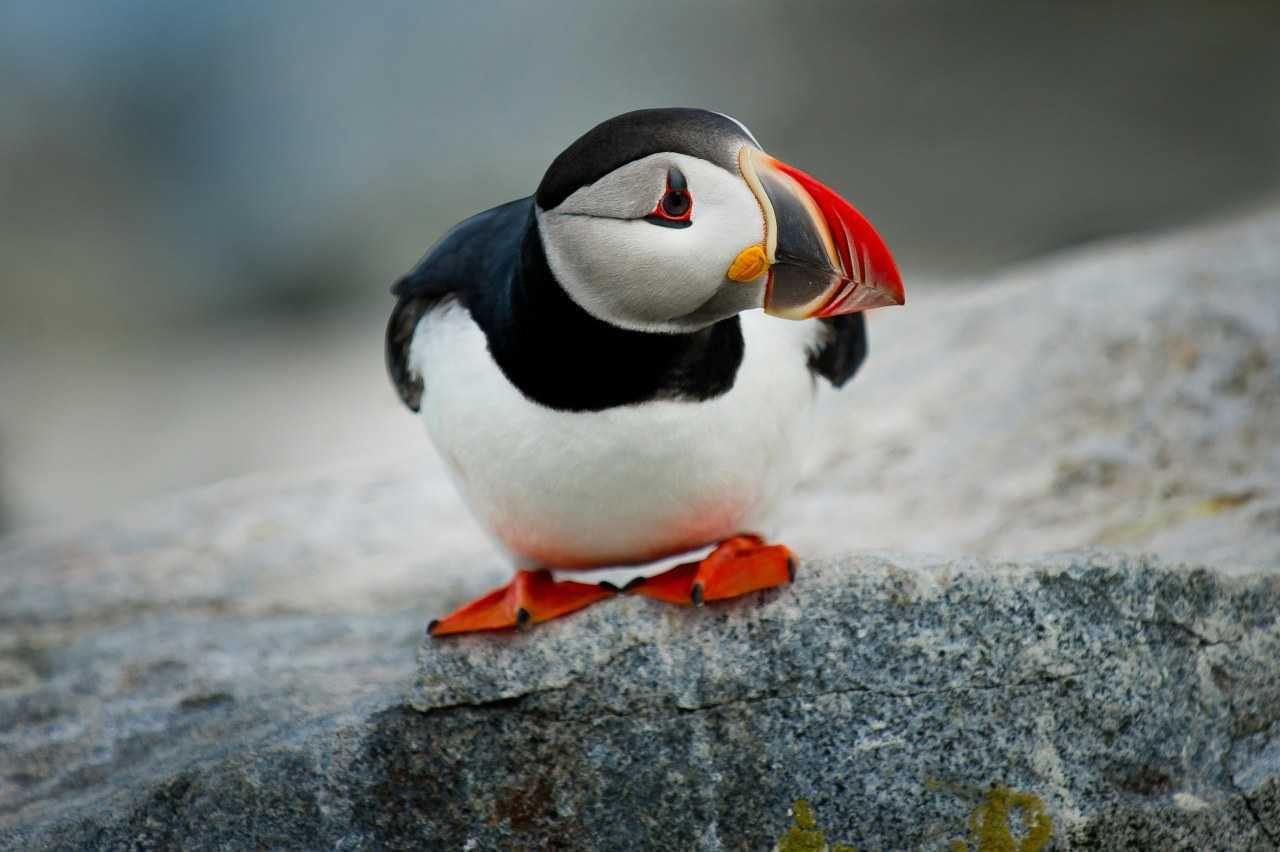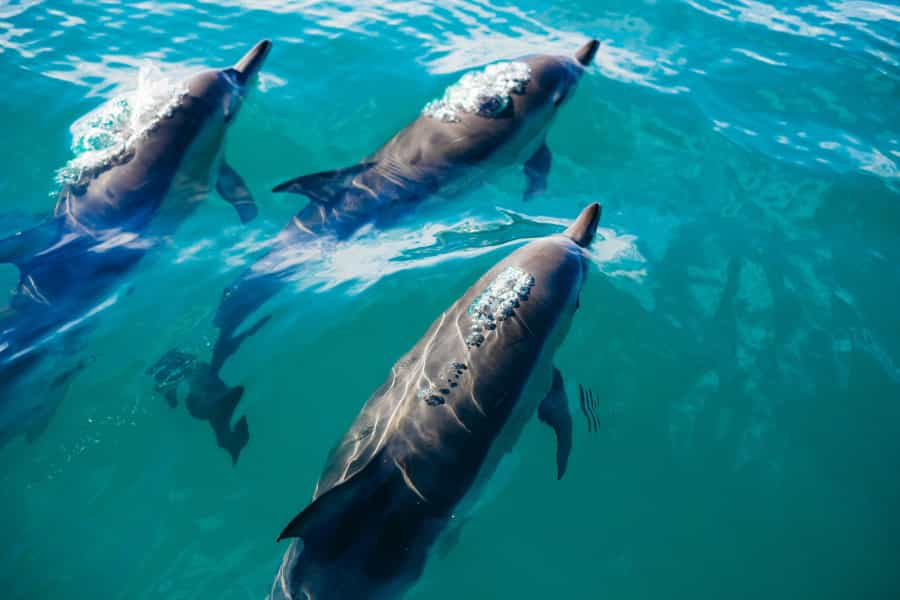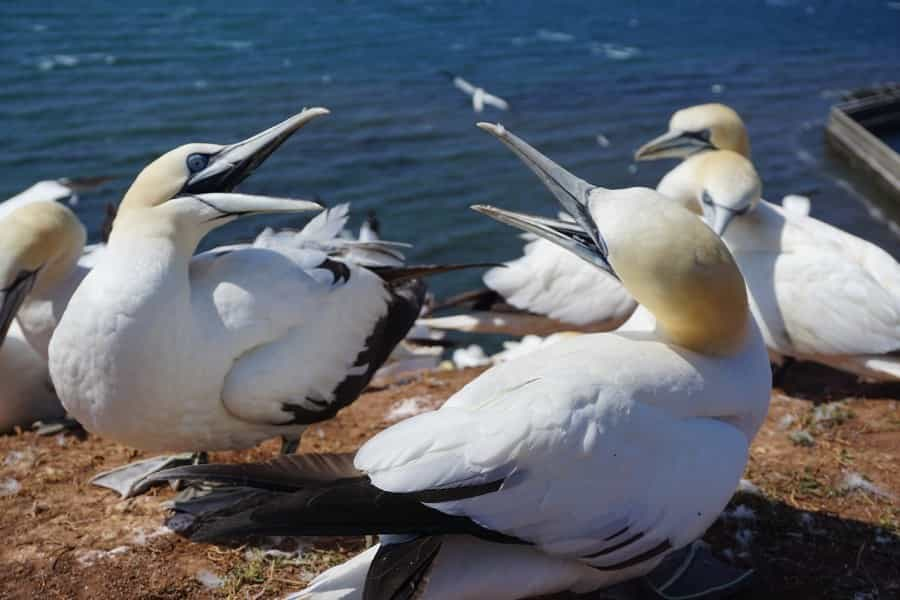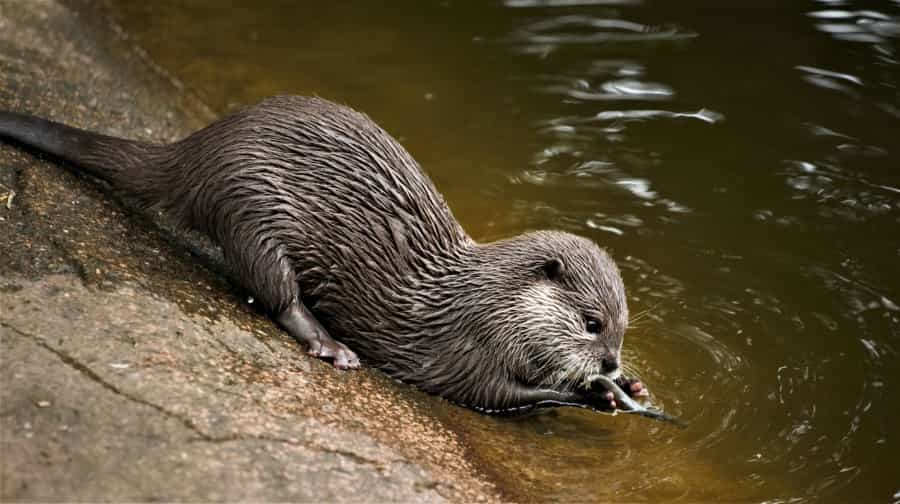Wildlife in Pembrokeshire Coast National Park

Pembrokeshire Coast National Park may be one of the UK’s smaller national parks, but it certainly packs a punch when it comes to wildlife. Fragmented into four sections, it is ringed by a spectacular coastline rich in diverse bird and marine life – the latter including seals, dolphins, porpoises and whales – while inland you can spot otters splashing in rivers or bats feeding on insects at dawn and dusk.
Pitchup’s comprehensive guide to wildlife in the Pembrokeshire Coast National Park highlights what you might see in the park, the best spots for wildlife watching and what you can do to preserve its frail ecosystem. And don’t forget that the Pembrokeshire coast is very much open to all – the Walkability Project ensures that people of all abilities can enjoy its spectacular fauna and flora.
Coastal and marine wildlife
Given its name, it won’t come as a complete surprise to learn that the Pembrokeshire Coast National Park has the longest coastline of any UK national park, coming in at a whopping 260 miles (418 km). It is also the only park with biodiversity as rich offshore as it is on land.
Whales, dolphins and porpoises

The Pembrokeshire coastline is warmed by the Gulf Stream, pushing all the way north from the Caribbean and bringing with it a concentration of plankton and small fish. Such a handy source of food attracts some very exotic gourmet diners, and Cardigan Bay is famed for its regular sightings of bottlenose and Risso’s dolphins as well as harbour porpoises.
Other visitors that would normally only be seen in the open ocean are orca, minke, fin and pilot whales, as well as short-beaked common dolphins and the occasional basking shark.
Local tip: Whales, dolphins and porpoises can often be spotted from the Pembrokeshire Coast Path, especially around Strumble Head and Fishguard Harbour.
Grey seals
Approximately 5,000 Atantic grey seals call the protected waters of the Pembrokeshire Coast their home; they are often seen basking on rocks or frolicking in the sea throughout the year. However, the most reliable time to spot these charismatic marine clowns is winter and early spring, when they come ashore to moult, or in autumn, when the females return to dry land to give birth.
Stay at a distance from seal colonies (especially during the pupping season as the mothers are protective) and take binoculars to watch them close up.
Local tip: Although you can see grey seals on most coves around the park, some of the best spots for observing the daily life of the colonies are Strumble Head and Marloes Sands, and the offshore islands of Skomer and Ramsey.
Birdlife
Along with kittiwakes, fulmars and guillemots, puffins, gannets and Manx shearwaters gather in vast numbers on the coastal reaches and minuscule islands of Pembrokeshire Coast National Park, with rare choughs choosing to nest on mainland sea cliffs.

Atlantic puffins
One of the best-loved birds of Pembrokeshire – and certainly the most colourful and comical – puffins sport burnt-orange striped beaks and have a certain whimsical charm. They are not shy and often nest close to the footpaths on Skomer and Skokholm, neighbouring islands that together form the biggest puffin colony in the southern UK. Your best chance to see these ocean-wandering migrants is during their breeding season (April to July).
Choughs
Members of the corvid family and looking for all the world like crows with bright-red beaks and matching legs, choughs tend to congregate along the coastline, nesting in caves and crevices in the cliffs. Nowhere near as common as the area's other sea birds, there are up to 75 breeding pairs in the national park, and their favourite locations include Stack Rocks on Castlemartin Peninsula and Ramsey Island.
Northern gannets
Wales’ only colony of Northern gannets is found on Grassholm Island, a tiny white speck in the middle of the sea 11 miles (17.5 km) off the coast of Pembrokeshire. For the conservation of these raucous and athletic diving birds with coal-black wing tips, you cannot land on Grassholm, but several boat companies make the trip out to circumnavigate the island and get you close up to the 39,000 pairs of gannets that migrate as far afield as Africa and then return from February onwards to breed.
Local tip: You can also see a smaller colony of gannets on Skomer Island.
Manx shearwaters
A close relative of the albatross, black-and-white Manx shearwaters nest in burrows and are largely nocturnal, so they can be difficult to observe. Luckily for visitors, Skomer supports one of the largest breeding colonies in the world; book an overnight stay at the island’s hostel during the breeding season (April to August) to see the birds as they noisily return to roost under the cover of darkness.
Inland wildlife
Although the national park is better known for its marine and coastal life, there are some showstopper animals thriving away from the sea as well.
Bats
Twelve of the UK’s 16 species of bat are found in the Pembrokeshire Coast National Park, and they are all in decline. As they are vital insect predators, plant pollinators and seed dispersers, their roost sites are closely protected in a bid to boost numbers. A colony of pipistrelle bats (tiny creatures measuring 1.5 inches/4 cm with a wing span of 8 inches/20 cm) is present in the national park, and they can be seen along with greater horseshoe bats at National Trust-owned Stackpole early on summer mornings or at twilight as they feed on insects caught in flight. You can also hear baby bats squeaking in the trees at Colby Woodland Garden.
Local tip: Using a bat detector to pick up their ultrasound calls will help you pinpoint their location.
Otters

Less elusive than their Scottish cousins, the otters living in the park can often be seen swimming in the sea and – despite being mainly nocturnal – trotting across Pembrokeshire beaches in broad daylight. Keep an eye out for them in beachside spots with vegetation cover, near freshwater streams or feeding spots like rock pools.
You can also try your luck at Bosherston Lakes, where playful otters steal the show as they frolic on the lily ponds, and at Teifi Marshes Nature Reserve just outside the northern border of the park.
Local tip: Increase your chances of seeing otters by looking for their footprints and droppings (called ‘spraint’) along river banks and in the sand.
Red squirrels
There’s only one place where you can spot red squirrels in the Pembrokeshire Coast National Park, and that’s Caldey Island, which can be accessed on boat trips from Tenby Harbour every day except Sunday between Easter and October. If you visit before the end of July, you’ll also get to see sea birds and choughs nesting on the cliffs.
Wildlife experiences in Pembrokeshire Coast National Park
If you’re a novice wildlife watcher and need some inspiration, or would rather be guided by expert naturalists, here are a few suggestions for ways to have a successful day of wildlife watching in the park.
Bird hides
There is an accessible bird hide at the beachside Secret Marsh Nature Reserve, adjacent to the Pembrokeshire Coast Path. Park at Freshwater East car park.
Birding tours
Professional guides can help you find the birds you’d like to see and also improve your identification skills. The National Park Authority offers expert-led shearwater walks in summer. You can find more details of these in the online magazine Coast to Coast.
Wildlife cruises and boat trips
There are several cruise companies offering day trips out to Skomer, Skokholm, Grassholm and Ramsey islands to see the sea bird colonies – the puffins being a firm favourite with visitors. Departure points include Martins Haven and St Justinians.
Boat trips also head out into Cardigan Bay in the hope of spotting the resident dolphin pods or passing whales on their way to the rich feeding grounds in the Irish Sea. Boats leave from St Davids, Milford Haven and Tenby, or you could head north from the national park to the popular hub of New Quay.
Family wildlife attractions
There are several family attractions showcasing local wildlife either in or on the periphery of the park. Read more about them in our guide to family-friendly Pembrokeshire activities.
Essential tips for wildlife watching in Pembrokeshire Coast National Park
While you’re never guaranteed sightings of any wildlife – especially offshore in the Irish Sea – follow these simple suggestions and you may tip the odds in your favour.
Preparation
-
Bring binoculars and a camera with a good zoom lens.
-
Wear appropriate clothing for the weather, which can be unpredictable along the coast or out at sea.
-
Carry a field guide or use an app like Wales Coast Explorer to help identify species.
Where can I walk?
Respect for your surroundings is key here; get to know the signs and symbols of the countryside so you don’t end up trespassing on private land.
-
Stay on marked paths, unless you’re on Open Access land, to protect crops and wildlife.
-
Use gates and stiles wherever possible.
Best times to visit
Generally speaking, early morning and late evening are the best times for wildlife sightings, as animals and birds are active and feeding. However, what you’ll see in the national park also depends on the time of year you’re visiting.
-
Migrating birds arrive from eastern climes to overwinter.
-
Breeding seabirds swathe the cliffs in spring and early summer.
-
The park’s A-list celebrities – the whales, dolphins and porpoises – can be seen all year around, either from coastal cliffs or on boat trips.
Five tips for responsible wildlife watching on land
Visitors to the Pembrokeshire Coast National Park can all help to conserve and protect its fragile environment. To keep you and the animals safe, always follow the Countryside Code, and:
-
Keep a safe distance away from wildlife, using binoculars and long-lens cameras to get your close-ups.
-
Never approach a young animal and its mother.
-
Do not disturb ground-nesting birds in the March–July breeding season.
-
Take all your litter home with you, and leave no trace of your visit.
-
Keep dogs away from wildlife completely or ensure that they are on leads.
Be respectful when at sea
Please never approach marine mammals when you are out boating. Conservation experts have drawn up a code of conduct to protect and preserve the marine life that makes the Pembrokeshire coast such a unique place.
-
Always keep your distance from marine wildlife and large concentrations of birds or seals as well as seasonal breeding areas. Getting too close can cause stress, egg and seal pup abandonment or injury.
-
Plan your trip route ahead of time to avoid marine areas of agreed access restrictions.
-
Reduce speed and keep noise levels to a minimum to prevent disturbance to the cetaceans – five knots is acceptable. Loud noises can also disrupt seals and sea birds during breeding and nesting times.
If you’re looking for more information on the wildlife in Pembrokeshire Coast National Park, the park authorities have a series of detailed leaflets available to accompany your visit to this spectacular corner of Wales. Whether you’re hoping to spot dolphins frisking in the waves of Cardigan Bay, or embarking on an early-morning hunt for pipistrelle bats, the spectacular animals in this equally spectacular park will never disappoint.
Looking for somewhere to stay during your coastal trip? Outdoor accommodation puts you close to nature, so make sure to check out Pitchup’s superb choice of camping choices within the national park, from nearly wild campsites where you’re left to your own devices to relish being back in nature and family-friendly campsites to glamping options offering a few touches of luxury.